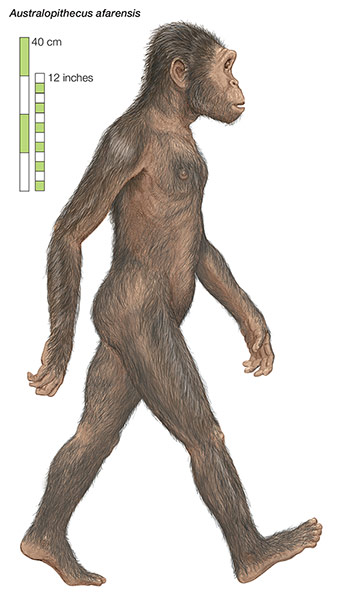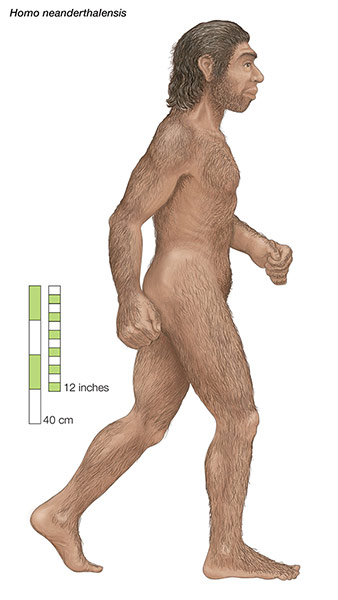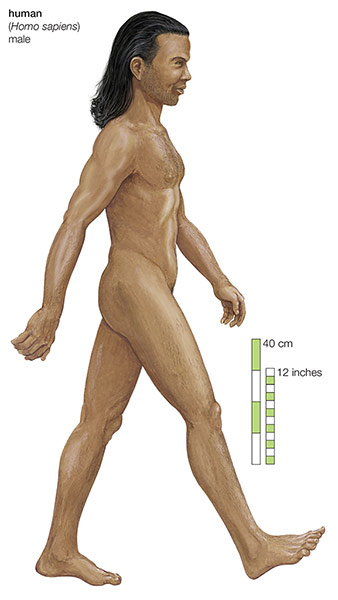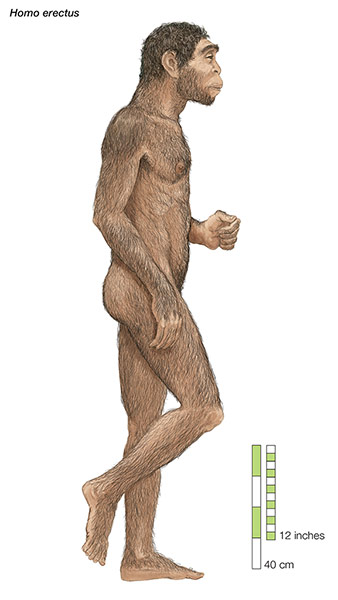 |
| The Human Lineage |
The modern Human
Anatomically modern humans are generally classified as Homo sapiens, which means 'Man the Wise' in Latin. Modern humans are the only living species under the genus Homo and are estimated to have emerged from Africa 200,000 years ago. They have a highly developed brain and an erect body, they are also the only living species who build fires, wear clothes, cook and develop technology. The evolutionary history of the modern human can be traced back millions of years, through fossil and genetic analysis. It is characterised by a series of behavioral, physiological and morphological changes such as bipedalism, large brain and the larynx for speech.
Modern humans evolved from archaic Homo sapiens in Africa 200,000 years ago, who evolved from the Homo erectus before them. A series of modern humans migrations out of Africa then occurred and eventually modern humans lived all over the world. They replaced archaic forms of humans such as the Neanderthal with or without genetic admixture.
 Australopithecus afarensis
Australopithecus afarensis The A. afarensis are estimated to have lived between 3 and 4 million years ago. The A. afarensis has a projecting face, large jaw and a small brain case, they walked upright and are believed to be the first to use stone tools for hunting.
Homo habilis
 Homo habilis means skillful in Latin and is one of the earliest species in the genus Homo. They are estimated to have lived between 1.5 and 2 million years ago in Africa. This species is different to the A. afarensis in terms of cranial morphology, but they also share a lot of the same features. The Homo habilis has a larger brain, smaller brow ridges, smaller jaw and a flatter face. They are believed to have used and manufactured stone tools actively due to the large number of stone tools that are found along with their fossils.
Homo habilis means skillful in Latin and is one of the earliest species in the genus Homo. They are estimated to have lived between 1.5 and 2 million years ago in Africa. This species is different to the A. afarensis in terms of cranial morphology, but they also share a lot of the same features. The Homo habilis has a larger brain, smaller brow ridges, smaller jaw and a flatter face. They are believed to have used and manufactured stone tools actively due to the large number of stone tools that are found along with their fossils. Homo erectus
Homo erectus fossils are found all over Africa, Asia and Europe. They are estimated to have lived between 300,000 and 1.8 million years ago and are the first in the human lineage to have lived outside of Africa. The homo erectus has a large skull and thick bones. They have a posture that is very similar to modern humans, along with similar limb proportions.
The Homo erectus was able to colonise land outside of Africa due to technology invented by the species, they were the first species to control fire and manufacture axes for hunting.
Many species of human are believed to evolve from the Homo erectus in Africa, they then spread to other parts of the world and replaced earlier Homo erectus. These humans include the Homo sapiens and the Homo neanderthalensis.

Homo neanderthalensis
Neanderthal fossils are found all over Europe and Asia and none in Africa. They are estimated to have lived between 30,000 and 150,000 years ago. They have many unique features which are related to their hunting abilities and adaptation to cold weather. They also used and manufactured sophisticated tools and technologies which they used to hunt large animals from a close range. They shared the earth with modern humans for many years and also shared a common ancestor, the Homo erectus.
The Neanderthal has a large, long skull with heavy brow ridges, they were generally bigger but shorter than Homo sapiens. This is because they lived in cold environments, their skeleton evolved to become short and wide to minimise heat loss. Some scientists also believe that the Homo neanderthalensis may have contributed some of its genes to the modern human genome.


No comments:
Post a Comment